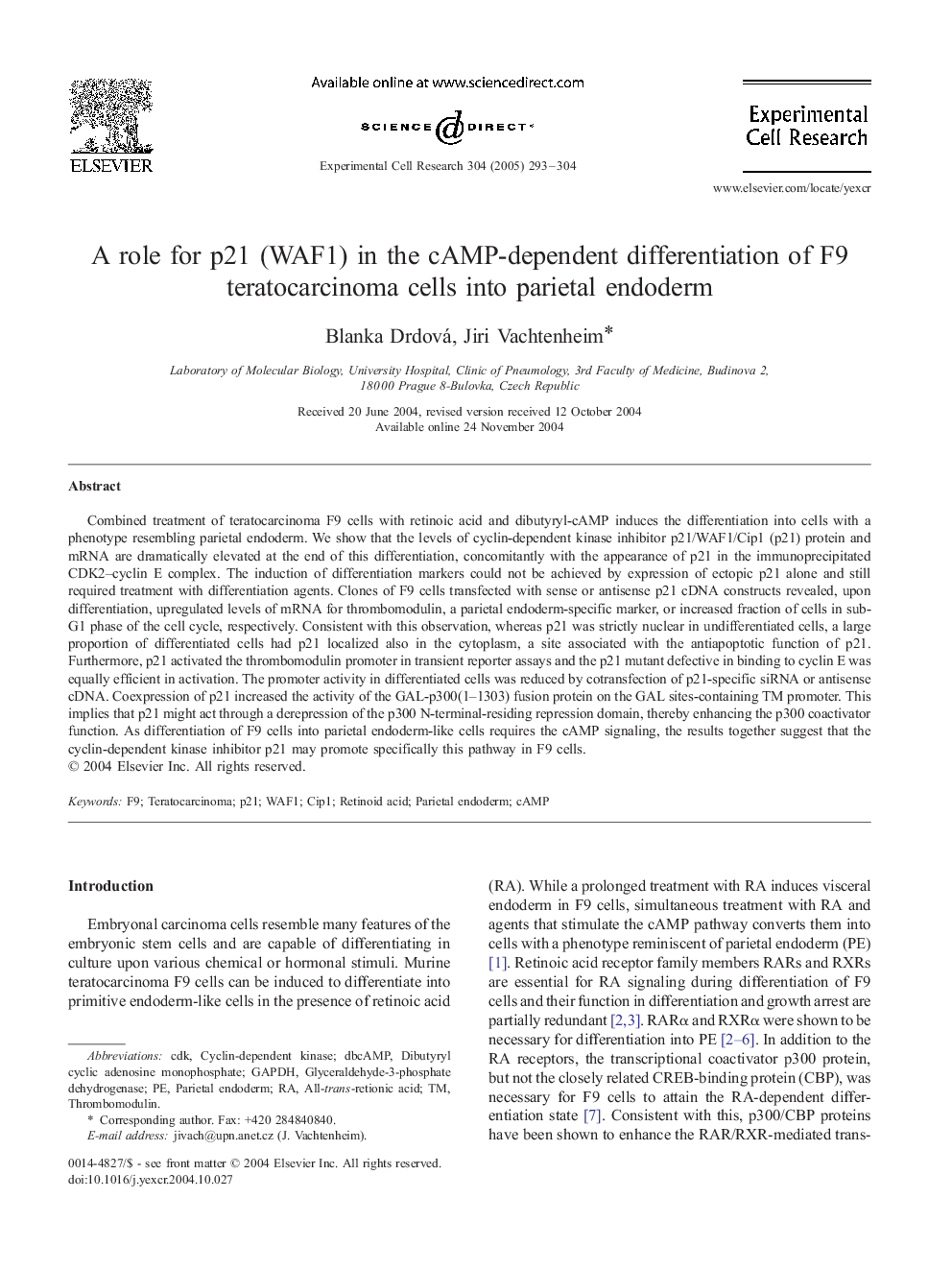| Article ID | Journal | Published Year | Pages | File Type |
|---|---|---|---|---|
| 10905624 | Experimental Cell Research | 2005 | 12 Pages |
Abstract
Combined treatment of teratocarcinoma F9 cells with retinoic acid and dibutyryl-cAMP induces the differentiation into cells with a phenotype resembling parietal endoderm. We show that the levels of cyclin-dependent kinase inhibitor p21/WAF1/Cip1 (p21) protein and mRNA are dramatically elevated at the end of this differentiation, concomitantly with the appearance of p21 in the immunoprecipitated CDK2-cyclin E complex. The induction of differentiation markers could not be achieved by expression of ectopic p21 alone and still required treatment with differentiation agents. Clones of F9 cells transfected with sense or antisense p21 cDNA constructs revealed, upon differentiation, upregulated levels of mRNA for thrombomodulin, a parietal endoderm-specific marker, or increased fraction of cells in sub-G1 phase of the cell cycle, respectively. Consistent with this observation, whereas p21 was strictly nuclear in undifferentiated cells, a large proportion of differentiated cells had p21 localized also in the cytoplasm, a site associated with the antiapoptotic function of p21. Furthermore, p21 activated the thrombomodulin promoter in transient reporter assays and the p21 mutant defective in binding to cyclin E was equally efficient in activation. The promoter activity in differentiated cells was reduced by cotransfection of p21-specific siRNA or antisense cDNA. Coexpression of p21 increased the activity of the GAL-p300(1-1303) fusion protein on the GAL sites-containing TM promoter. This implies that p21 might act through a derepression of the p300 N-terminal-residing repression domain, thereby enhancing the p300 coactivator function. As differentiation of F9 cells into parietal endoderm-like cells requires the cAMP signaling, the results together suggest that the cyclin-dependent kinase inhibitor p21 may promote specifically this pathway in F9 cells.
Keywords
Related Topics
Life Sciences
Biochemistry, Genetics and Molecular Biology
Cancer Research
Authors
Blanka Drdová, Jiri Vachtenheim,
